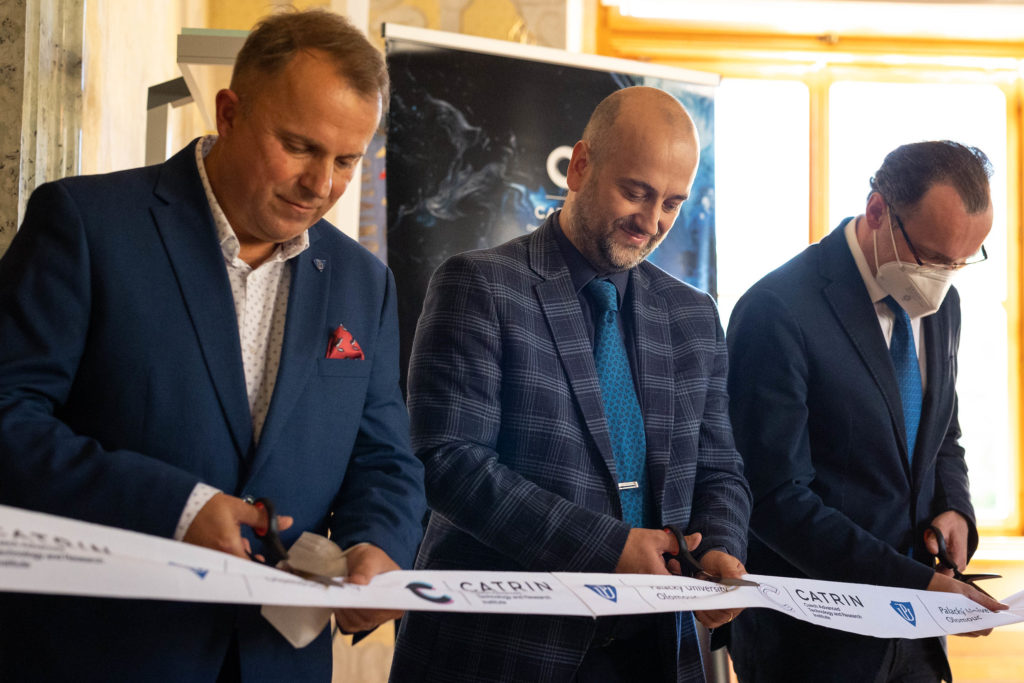Grand Opening of Palacký University’s Research Institute CATRIN
A grand opening ceremony marked the beginning of the journey of the Czech Advanced Technology and Research Institute (CATRIN) to a European scientific elite. CATRIN, which has ambitions to compete with leading national and European research institutes, focuses on interdisciplinary research in nanotechnology, biotechnology, and biomedicine, with a strong emphasis on international cooperation and transferring results to practice.
CATRIN’ research activities aim to contribute to addressing global societal challenges. “Our priority is to focus on new options for collecting and storing ‘green’ energy and to participate in the development of sustainable agriculture, environmental protection, or the prevention and treatment of civilizational diseases. In addition to cutting-edge fundamental research, we pay attention to transferring the results of the research into practice,” said Pavel Banáš, CATRIN Director.
CATRIN is the result of Palacký University’s effort to integrate research capacities and build a strong institute on both a European and global scale. This trend has been long supported by the Ministry of Education, Youth and Sports of the Czech Republic. CATRIN currently has over 220 employees, about a third of whom are foreigners. Among them are several researchers who regularly appear in the list of the world’s most highly cited scientists announced annually by the American company Clarivate Analytics (electrochemistry expert Patrik Schmuki, chemist Rajender Varma, physical chemist Radek Zbořil). The team, led by Michal Otyepka, is implementing two prestigious European Research Council (ERC) grants related to research on low-dimensional carbon nanomaterials and their applications. For example, CATRIN scientists are in the management of the European Federation of Biotechnology and have been also heavily involved in the development of new technologies to combat COVID-19. The CATRIN team also includes Marián Hajdúch, the former national coordinator of covid-19 testing.

The Institute works closely with a number of international workplaces, including leading scientific institutes in Italy, Spain, Switzerland, Germany, the US, Japan, and other countries.
“Top science is not possible without international cooperation. We are therefore establishing strategic partnerships with the selected institutions, which we want to use for regular exchanges of our scientists and to increase success in major grant calls. These days, we are finalising the first phase of a grant proposal within the prestigious TEAMING grant call under Horizon Europe with colleagues from Israel’s Bar-Ilan University and Friedrich–Alexander University Erlangen–Nürnberg, Germany,” added Banáš.
CATRIN began operating on 1 October last year, when its statute came into force. The opening ceremony was delayed due to the covid-19 pandemic.
“It is a great honour for me to witness the opening of such an important institution. As Mayor, who represents the city at various levels, I always very much appreciate when I hear that it is the two basic pillars people admire about Olomouc—the history we have inherited and education, research and development. I hope CATRIN will be successful, will pass down its legacy to the future generations and will be the fuel for the further development of the city,” said Mayor Žbánek during the formal meeting.
CATRIN’s scientists have already experienced success, for example, in the development of new graphene-derived materials for energy storage. They have also found a way to prevent bacterial resistance to both antibiotics and nanoparticles. In the field of water purification, they have developed unique sorbents allowing the effective removal of heavy metals or the separation of noble metals from water. Scientists at CATRIN have also described new pathways for using chemical engineering at the single atom level to increase the efficiency of converting solar energy into hydrogen, or using solar energy to make a very efficient transformation into heat using so-called plasmonic materials.

